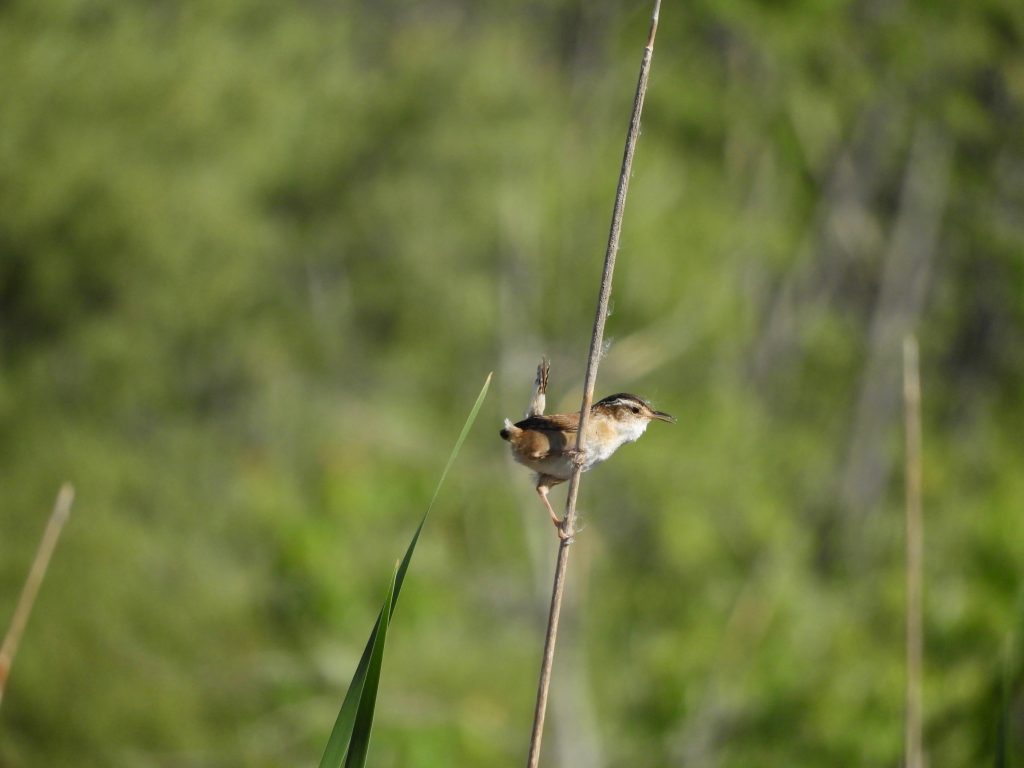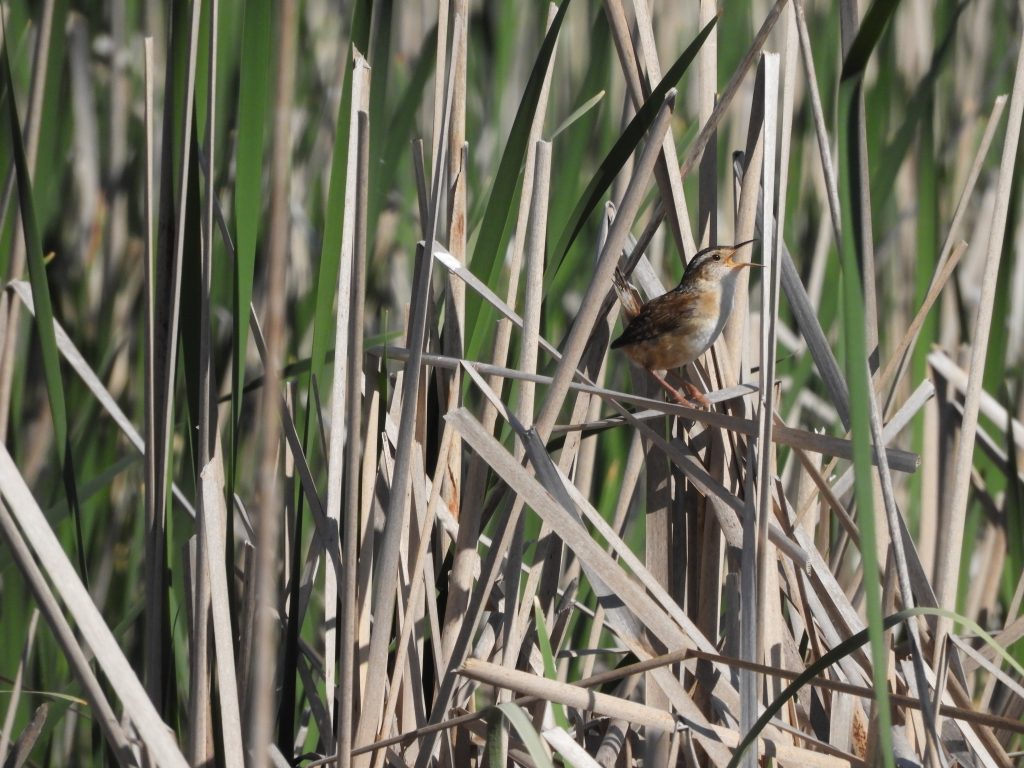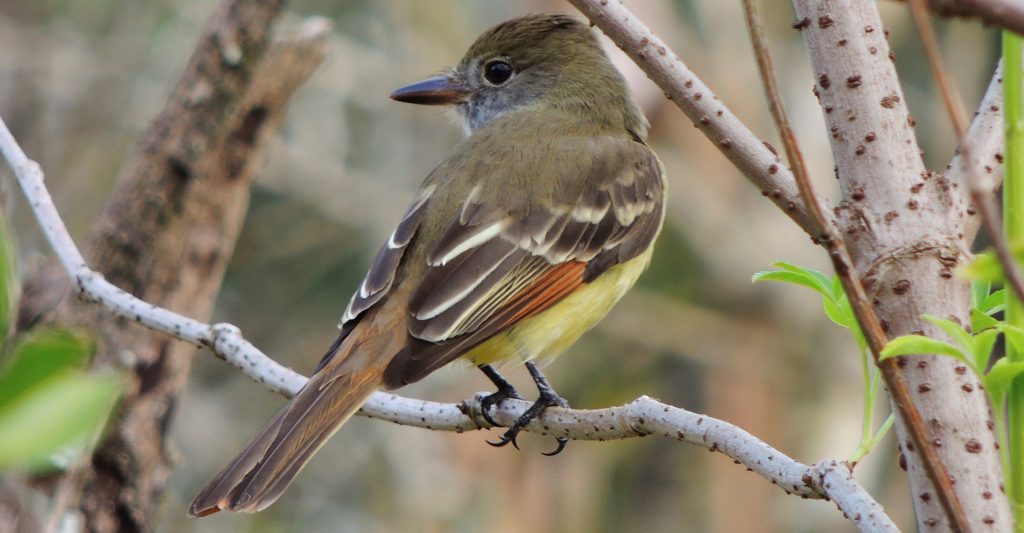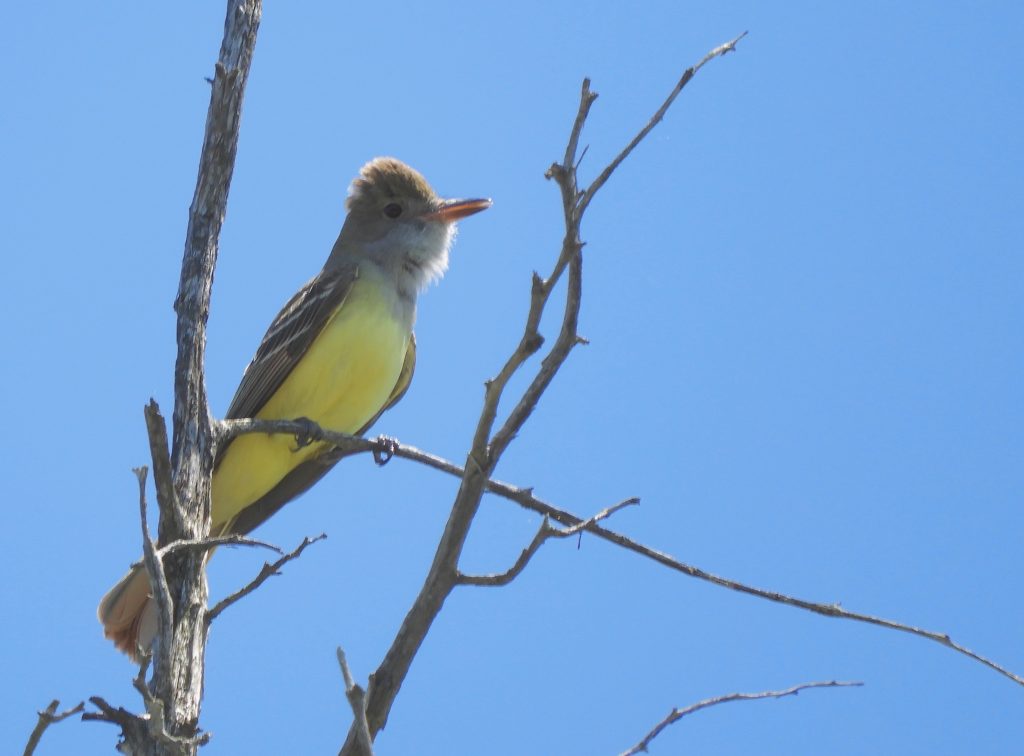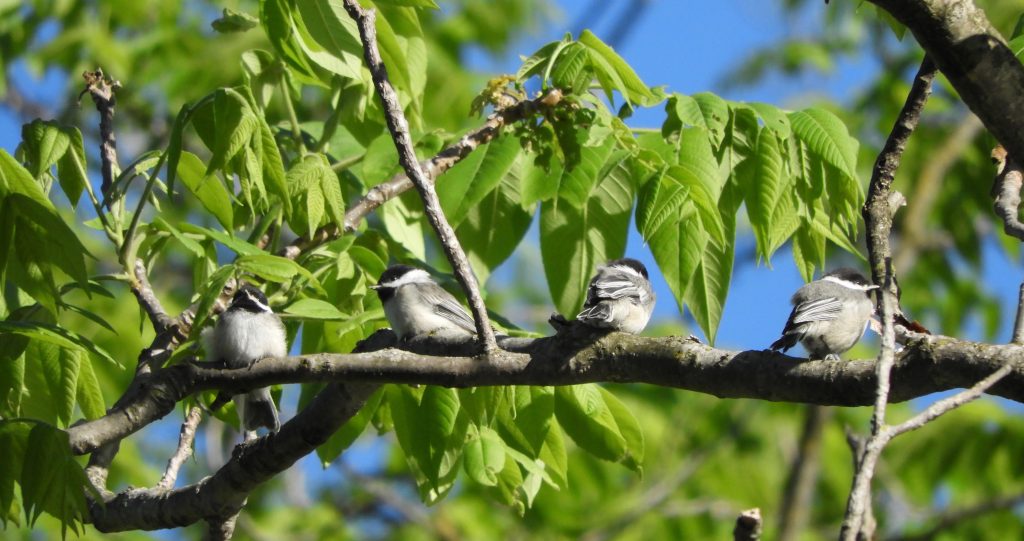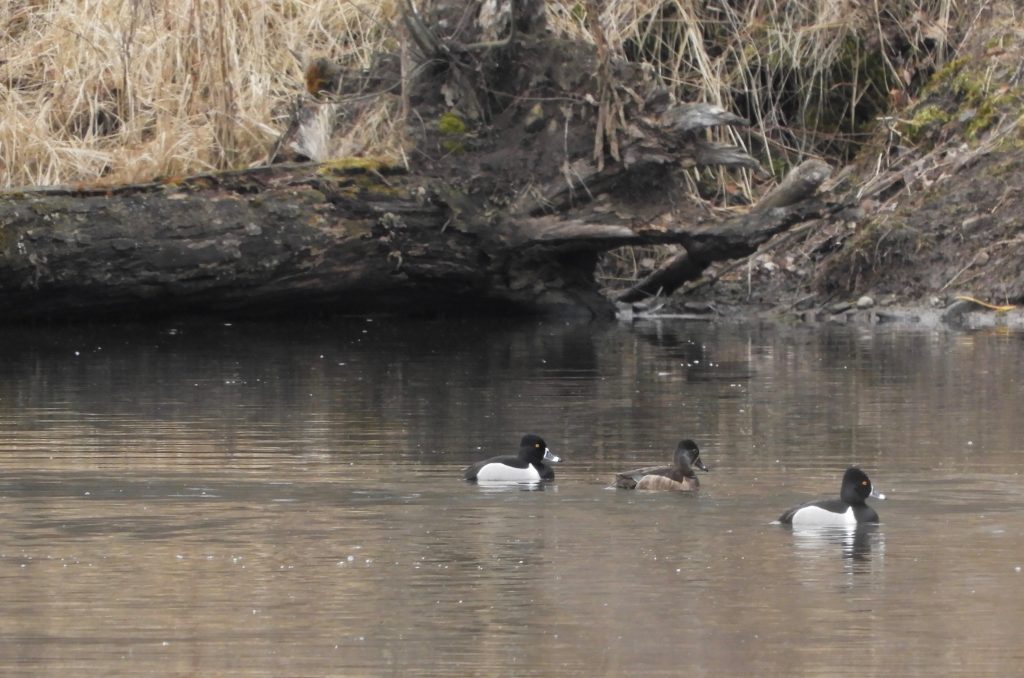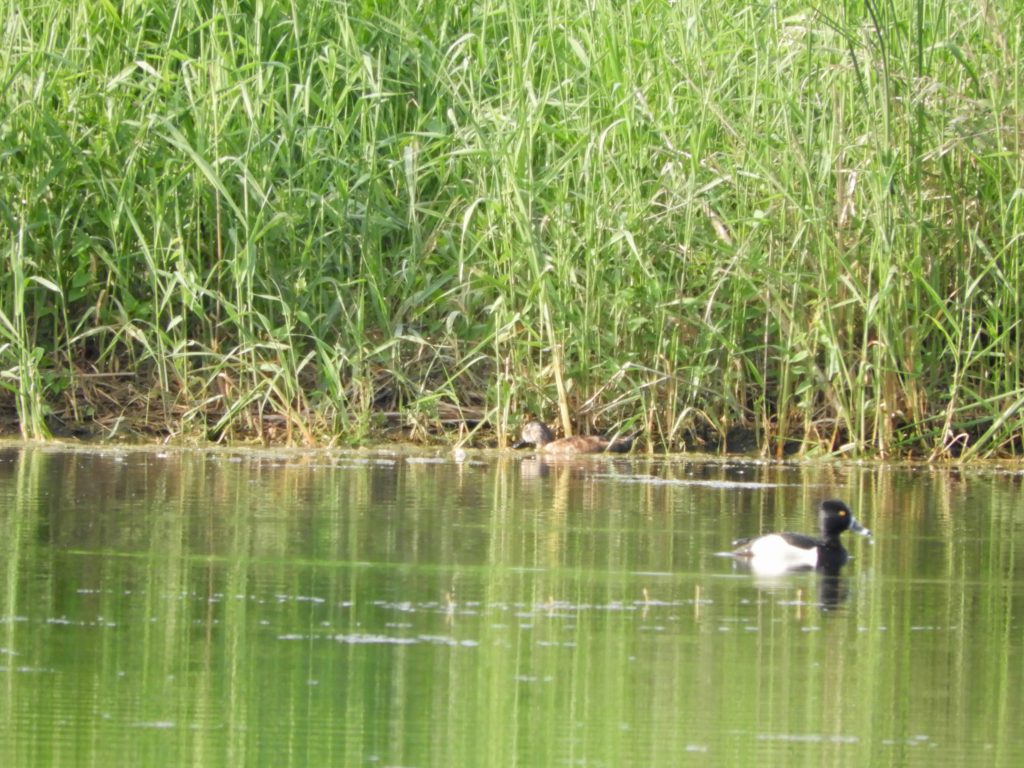 Scarborough Marsh, Saco, Maine. June 8 2022. I spent a week in early June birding with Dan, my friend from British Columbia. We travelled to Maine, heading first (with some good birding along the way) through Quebec, Vermont and New Hampshire. Dan had a handful of must-see birds including Bicknell’s Thrush (which led us into a very obscure corner of New Hampshire – without success) and Atlantic Puffin (offshore from Boothbay Harbor Maine. With success). But one other bird species had special appeal, the Saltmarsh Sparrow. It is an uncommon bird of Atlantic salt-marshes and we were in the right part of Maine to find it.
Scarborough Marsh, Saco, Maine. June 8 2022. I spent a week in early June birding with Dan, my friend from British Columbia. We travelled to Maine, heading first (with some good birding along the way) through Quebec, Vermont and New Hampshire. Dan had a handful of must-see birds including Bicknell’s Thrush (which led us into a very obscure corner of New Hampshire – without success) and Atlantic Puffin (offshore from Boothbay Harbor Maine. With success). But one other bird species had special appeal, the Saltmarsh Sparrow. It is an uncommon bird of Atlantic salt-marshes and we were in the right part of Maine to find it.
Scarborough Marsh is a well-known place for Saltmarsh Sparrows and a guide at the marsh’s Audubon Center gave us easy directions, “Follow this road for about a mile. You’ll see a parking lot on the left, park there. Follow the trail out across the marsh. They’re about 400 yards down that trail.” Well his advice put us on the right track, but it turned out to be a very very long 400 yards, and he didn’t mention the little biting flies.
Dan was more driven than I and moved on ahead. I was intrigued by the marsh and its tidal ecology as a whole, specific birds could wait. The tide was low and I paused to admire a Herring Gull foraging for crabs. It paced a bare trickle of water along a narrow tidal creek, all the while peering up and investigating the overhanging vegetation. As I watched, it worked its way up and reached in, several times, to grab a flailing crab.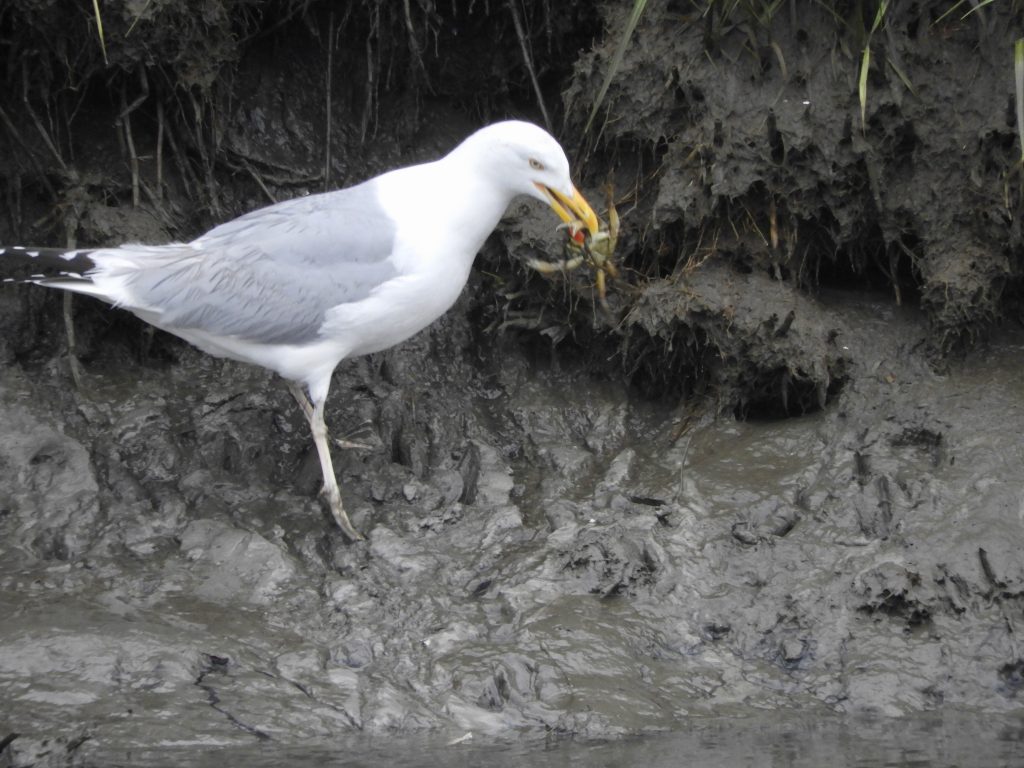
Taken to the flat bottom, and with one stab of the gull’s bill, the crab was opened up and cleaned out. I was fascinated by the gull’s hunting efficiency and that the vegetative overhang held so many crabs. They were probably European Green Crabs, one of the world’s worst invasive species.
I caught up with Dan and he pointed to a narrow expanse of salt-marsh where another birder said to look for Saltmarsh Sparrows. His tenacity and patience paid off and it wasn’t long before he was able to show me one. A couple of old timber piling made good vantage points for claiming territory, and at least one, perhaps two, used such high spots to make sure their houses were in order.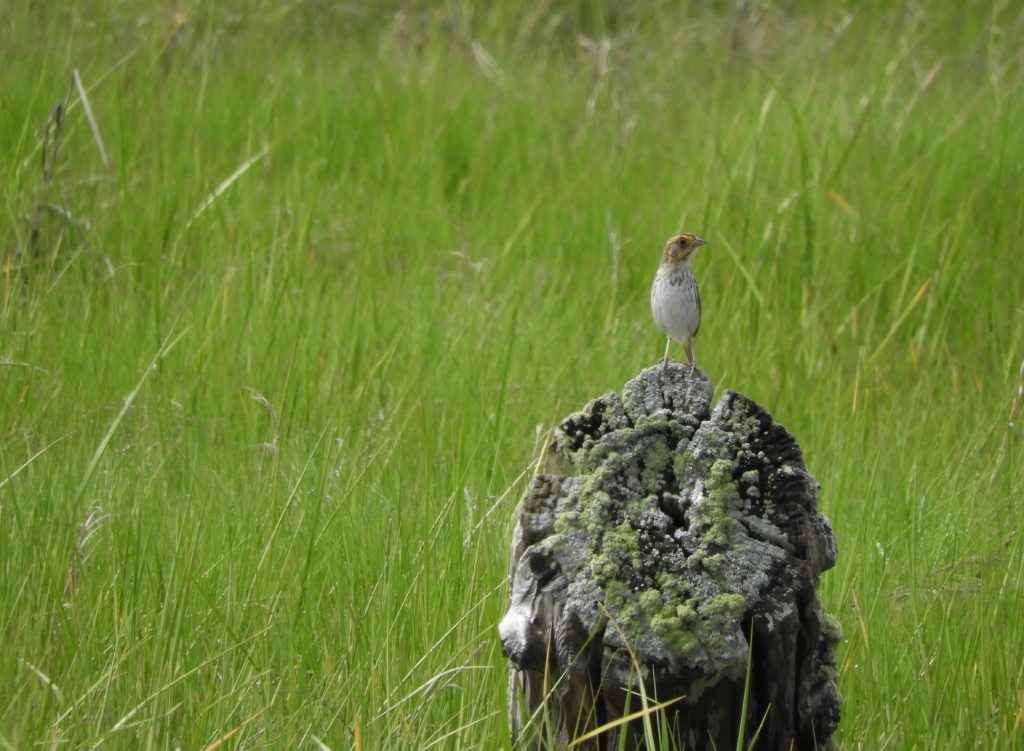
We both left Scarborough Marsh satisfied with our days’ work. We could say we’d seen a Saltmarsh Sparrow and I had been intrigued by the Herring Gull’s learned approach to feeding success.



